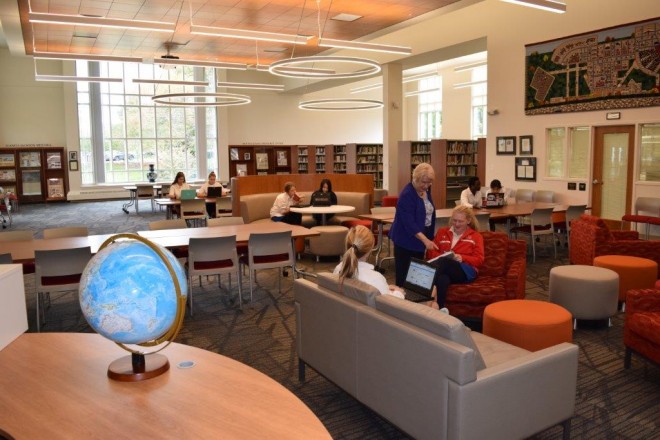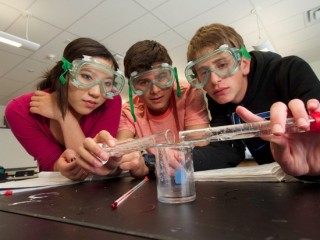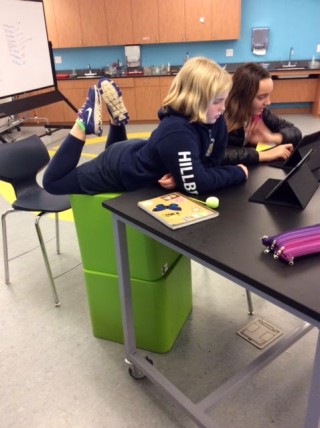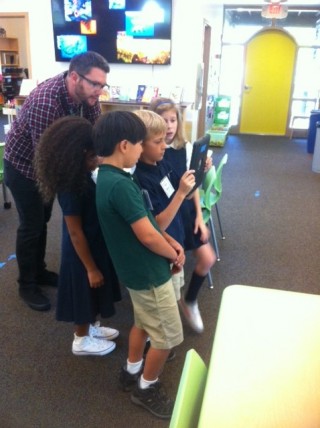Libraries everywhere are reinventing themselves into places of active learning where “students can interact with content, technology, the space and each other.”1 Libraries are “becoming less about the housing of books and more about connecting learners to knowledge.” Rather than emphasizing quiet for individual study, the goal is to encourage collaboration and creativity. The modern library provides a central, barrier-free space that “encourages students and teachers to collaborate, communicate, create and share knowledge. It provides for the exploration of ideas, encourages inquiry, imagination, discovery and creativity by connecting learners to the world of information and to each other.” 2 This concept requires a space that is flexible in every sense of the word.
The Middle and Upper School Faissler Library at RPCS is now furnished with moveable desks and tables, small rooms for either quiet study, group work, tutoring or meetings. Three of the small rooms are equipped with state of the art projectors that turn whiteboards into touch screens that allow work to be saved and emailed to others. Comfortable seating is interspersed with tables and chairs to accommodate individual as well as group study. Electricity is accessible everywhere and USB ports and noise cancelling headphones are available for use. In addition, a super-sized projector and screen are built into the main room for large presentations.
“We’re excited to have new technology and spaces for the students to connect and work collaboratively,” said Janice Moore, RPCS director of libraries. “It encourages creativity, imagination, communication and sharing knowledge rather than conducting research in isolation. That’s what today’s learners want and need.”
1. Holland, Beth. 21st Century Libraries: The Learning Commons
2. Mihailidis, Paul. Media Literacy and Learning Commons in the Digital Age



